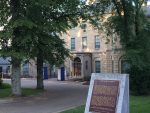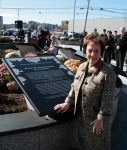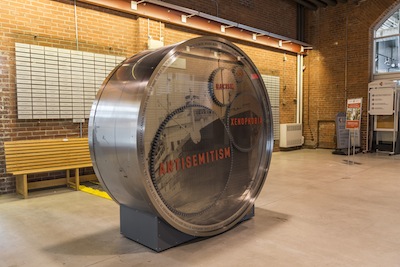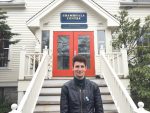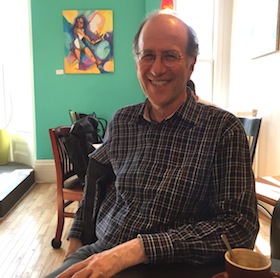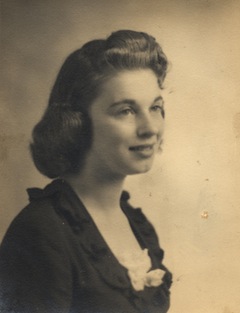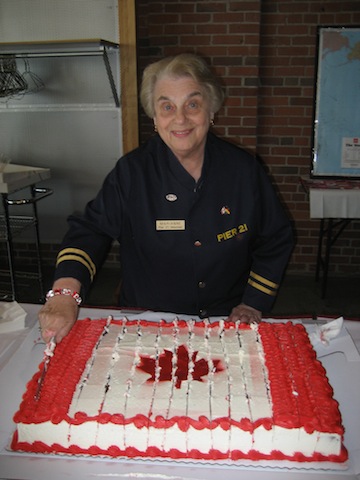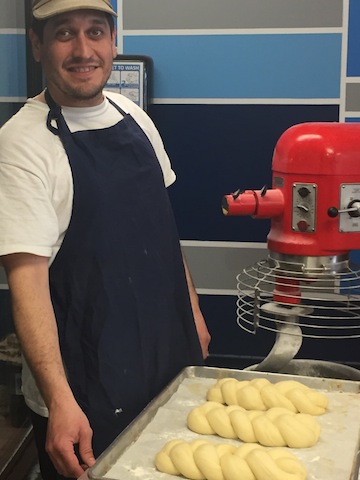When she was Nova Scotia’s lieutenant governor, Myra Freeman opened up Government House to the public. (photo by Alex Rose)
When Myra Freeman (née Holtzman) was appointed lieutenant governor of Nova Scotia in 2000, she broke down two major walls. She was the first woman appointed to the position, and she was the first Jewish person appointed to the position. In fact, she was the first Jewish appointee to such a position in all of Canada, and the second in the entire Commonwealth of Nations (the first was former Australian Governor-General Zelman Cowen).
“It’s always been my family and my heritage that have defined me,” Freeman told the Independent in a recent interview.
Her Jewish values, she said, were put in place by her grandparents, who moved to Canada around the turn of the 20th century, and strengthened during her upbringing in Saint John, N.B., the city where her grandparents eventually settled. The Holtzmans were one of about 120 Jewish families.
Freeman went through the Canadian Young Judaea program. She said it nurtured seeds to give back to Israel, to give back to community and to help improve the lives of Jewry on the other side of the world. These lessons were echoed by her parents – her mother was a president of the local Hadassah-WIZO chapter and her father was very involved with their synagogue.
“Over the years, I’ve never really lost sight of the fact that I have a responsibility to the Jewish community, and I’ve always been proud of the things that I’ve done in my shul, in Hadassah, in United Israel Appeal,” she said, just the beginning of the long list of a life of involvement in the Jewish community. But, with that, she added, “the broader community was a huge part of my life as I changed careers.”
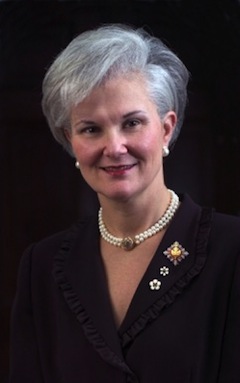
Freeman’s first career was teaching, and she always thought it would be her only career. She loved working with students, helping them discover the joys of learning and the world around them. She encouraged students to step up and help others, to set an example by leading the way. She passed along lessons she had learned from mentors who had inspired her over the years. And, as she taught these lessons, she also took them to heart, becoming increasingly involved in community.
“And that’s when, in April of 2000, I received a call from the prime minister [Jean Chrétien], and he asked me to take on the responsibility as the queen’s representative in Nova Scotia,” said Freeman.
Aside from being the first woman and the first Jewish person to serve in the role, Freeman’s tenure as lieutenant governor, which concluded in 2006, will be remembered for some of her main initiatives, said Craig Walkington, communications advisor to the Office of the Lieutenant Governor of Nova Scotia. For one, she focused on supporting education and childhood development. She also created a number of awards that recognized Nova Scotians who excelled in their fields, including writing, teaching and the environment.
“I think the one I’m most proud of is the Lieutenant Governor’s Masterworks award, which gives an opportunity for artists to showcase their creative talent,” said Freeman.
Walkington added that Freeman will also be remembered for opening up Government House, which is the lieutenant governor’s residence, to the public. It is the oldest vice-regal residence in North America – the cornerstone was laid in 1800.
“We call the Government House the ceremonial home of all Nova Scotians,” explained Walkington. “I think, for a lot of people, it was just this very big mansion on Barrington Street that they would drive by every day, and having it more accessible means that visitors and Nova Scotians can learn about the history of this province and the history of the people who worked and lived in this house.”
Walkington estimated that 14,000 to 15,000 people pass through Government House every year.
“We made it like our home. We had a kosher home, we had Shabbat, we had seders in there,” said Freeman of her time at Government House. “And I think one of the remarkable moments was we had a visit from royalty.”
When Prince Michael of Kent, a cousin of Queen Elizabeth, visited Nova Scotia in 2002, he stayed overnight in Government House. He was scheduled to arrive around 4:30 on a Friday afternoon and Freeman had been instructed to show him to his room and then leave him be, but she had other plans.
“You can’t surprise royalty, OK? You cannot just throw something on them when they arrive,” she said. But, even so, “after I showed him to the room, I said, ‘Every Friday night, our family tries very hard to be together to observe the Sabbath and have our Sabbath meal. And we’ll be eating dinner at 7 o’clock if you would like to join us.’… He looked at me and he said, ‘It would be an honour.’”
Freeman said Prince Michael was attentive throughout the whole evening, as they sang “Shalom Aleichem” and as her husband made Kiddush. At the end, he told Freeman that, as a man in his late 70s, it was the first Shabbat dinner he had ever attended; he also said it was the highlight of his trip across Canada.
“It just goes to show that we take for granted … our heritage, and we might not observe it as much because we think it’s nothing, but to somebody else … he was so honoured to be a part of it,” said Freeman.
“Each of us brings to our communities our traditions and our culture, our heritage,” she said. “And we, as people of an ethnic background, like all other people of ethnic backgrounds, contribute and make Canada unique…. We care enough to participate and to become involved in community, and we give of ourselves. And, when we do that, we add diversity to the country and we enhance the social fabric of our countries.”
As Jewish community members, she said, “we have the responsibility to our home and abroad, because, really, our heritage is our strength, and we have to preserve that through our actions. We never lost sight that we have an equal responsibility to take our place in the secular community – in our city, in our province, in our country, and globally – because Canada afforded our grandparents a home and the opportunity to achieve.”
Alex Rose is a master’s student in journalism at the University of King’s College in Halifax. He graduated from the same school in 2016 with a double major in creative writing and religious studies, and loves all things basketball, especially his hometown Toronto Raptors.

